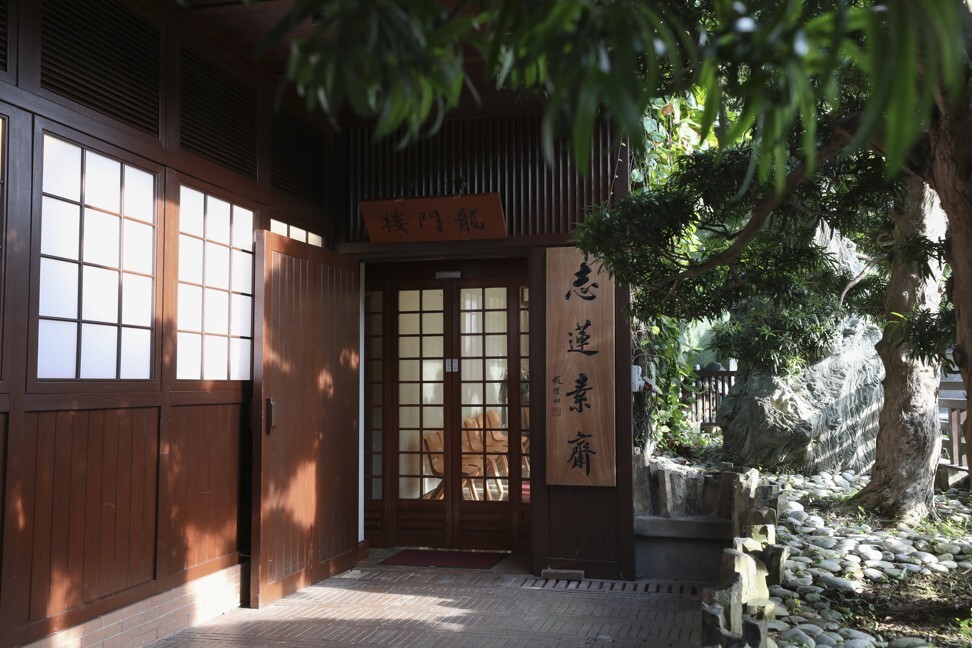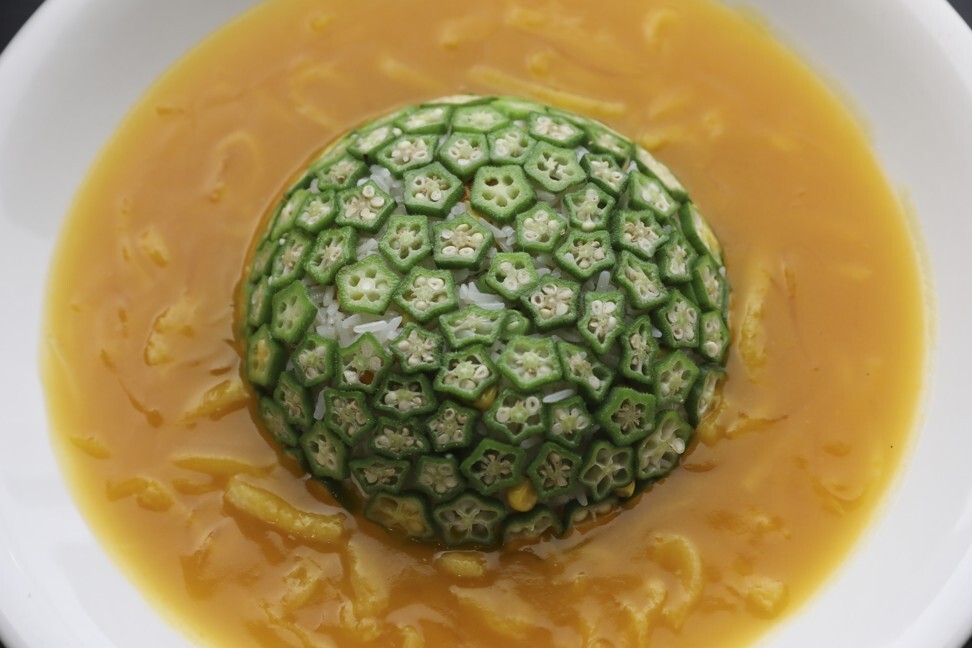
Buddhist food: how the healthy, vegetarian dishes full of seasonal ingredients can imitate meat with funguses and plants
- A testament to their reverence of nature, many Buddhist dishes emulate the flavour and texture of meats using ingredients you may not have seen before
- Morchella, for example, is a fungus that resembles lamb tripe, while konjac is a plant made into a jelly that has the crunch and chewiness of real gristle
Visitors to the Chi Lin Nunnery in Hong Kong’s Diamond Hill neighbourhood find themselves surrounded by lush greenery, a quiet broken only by the chirps of birds, and winding paths that transport them to a Zen-like world. Life seems to slow down and unfold at a deliberate pace.
Chi Lin is modelled after the Jiangshouju Garden of the Tang dynasty (AD619-907), a traditional Chinese landscaped courtyard in Shanxi province that still exists today. The nunnery encompasses multiple architectural design techniques that extend the views and insulate the space from noise; it seems like there’s an invisible divider at the entrance, cutting it off from the hustle and bustle of the outside world.
Foods with an inherent pungency are also off-limits, including onions, garlic, scallions, chives and leeks, as the stimulating odours can interfere with the process of meditation and enlightenment. Alcohol is forbidden as it can cloud the mind and arouse lust, which may result in immoral behaviours or sexual misconduct.


The nunnery takes an organic approach to its food offerings, using only seasonal ingredients that are prepared in a way that emulates the flavour and texture of meats, a testament to the Buddhist belief in revering nature.
Bean curd sheet rolls marinated with soy sauce, a cold appetiser, resembles slices of marinated pork knuckle or beef tendon cuts. Even with close scrutiny, it resembles collagen, lean meat and fat. The bean curd sheet is marinated in home-made five-spice powder and soy sauce, before being thinly sliced. “The five-spice powder shouldn’t be used in excess, or it will be so powerful that the meat-flavoured bean curd will be masked,” says chef Yen Chun-ying.


Silver-ear mushroom and baby cucumber in spicy sauce, another cold appetiser, features morchella, a fungus that resembles lamb tripe. The baby cucumbers are actually cucumber flowers. “They’re plucked right before they’re ripe and fall onto the ground,” Yen says. “They have a very short shelf life, so we use them as soon as they arrive in the kitchen.”
Fungus and wheat gluten play an important role on Chi Lin’s menu. Funguses, imported from Yunnan province, comes in various shapes and textures, with different health benefits. The vegetarian stock used in many dishes is boiled with termite and straw mushrooms, which together magically replicate the unami richness of meat-based stock.
At Chi Lin, diners may come cross unfamiliar ingredients such as bulrush, a herbaceous perennial plant that grows on the edge of ponds, rivers and lakes in Zhejiang province. It is used in a stewed dish, simmered with bean curd and spicy bean sauce. You might mistake it for water bamboo, as they look similar, and both have a crunchy texture. But bulrush is juicier and has a sweeter flavour that balances the ingredients in the savoury dish.



Three Virtues Vegetarian Restaurant, which has shops in Jordan and North Point, is more of a family-friendly diner, with communal dining at its core.
“We’re seeking to offer a homely dining experience for customers, whether they’re Buddhists or they simply want to try a meatless dinner,” owner Hui Chin-mong says. “We’re aiming [to be] a sought-after place for family gatherings on special occasions, weddings, funerals or celebrations.”
A staunch Buddhist himself, Hui vouches for the human virtues of gratefulness, benevolence and respect for nature, which are entrenched mantras in Buddhism. These faiths inform his approach to cooking. “We source only in-season ingredients, use them when they’re the freshest, say no to all additives, and let the ingredients speak.”


Vegetarians who miss the taste of meat or fish will be happy with the dishes here, while dining guilt-free. The deep-fried bean curd-wrapped vegetarian fish looks and tastes like sweet and sour squirrel fish. It’s made with shredded mushrooms, wood ear fungus, carrots and green turnips wrapped in a layered sheet of bean curd and seaweed before being deep-fried. The roll is cut into pieces then covered with sweet tart sauce. It has a seafood taste thanks to the seaweed, which, when fried, resembles crunchy fish skin.
Gluten has the flair of sucking up and amplifying whatever flavour you give it. The only limit is your imagination
Another house speciality is vegetarian chicken gristle. It’s fashioned from konjac, a plant made into a jelly that has the crunch and chewiness of real gristle. It makes its way into various dishes, such as stir-fried vegetarian cartilage with yam and black fungus; stir-fried green peppers, preserved bean curd and cartilage; and deep-fried cartilage dusted with salt and pepper.
Unlike at Chi Lin, dairy products are used at Three Virtues. Cheese is used in fried crispy bean curd sheet with cheese and glutinous rice, a vegetarian version of the classic Cantonese dish of glutinous rice chicken in lotus leaf; and in Napoleon mango and vegetarian seafood pastry rolls filled with deep-fried turnip shreds, made with Philippine mango and cheese wrapped in bean curd sheets and noodles before being deep-fried.


In Chinese vegetarian cuisine, wheat gluten is an important source of protein. It appears on the Three Virtues menu in various shapes and forms, each with a different texture and therefore cooked using different methods. The porous gluten acts like a blank canvas, absorbing flavours from other ingredients and sauces.
“Gluten has the flair of sucking up and amplifying whatever flavour you give it,” Hui says. “The only limit is your imagination. Gluten gives vegetarian dishes twists and turns, and also provides important sustenance.”
The menu here has remained almost the same for years. “We do not go out of our way to innovate dishes or manipulate the recipes in order to entertain modern palates,” Hui says. “Seasonal cooking is the bottom line.”


Customers – most of them middle aged or seniors – come in early. “In Buddhism, we have a term called ‘chi wu’, mandating ‘no eating after lunch’,” Hui says.
While this was a strict rule that all Buddhists adhered to in the past, it is changing as peoples’ lifestyles evolve. Buddhism holds that nothing on Earth is fixed, and that nature should be allowed to take its course. While most Buddhist followers today eat dinner, they tend to have an early and light one, Hui says.

Dim sum, a long-established custom in Hong Kong also known as yum cha, is not usually friendly to vegetarians, as most dishes are meat-based. Seeking to fill the void, Deluxe Veggie opened in Mid-Levels at the start of the year. It might not have been the best time due to the pandemic, and it isn’t the easiest location to access, but it has managed to keep its head above water so far, with customers mostly Buddhist and Taoists, as well as some expats and tourists.
The beautiful crown daisy dumpling that shimmers with edible gold dust is certainly striking, but as chef-owner Dicky Yip says, it is difficult to make a dumpling made only of vegetables. “Chopped vegetables come loose, unlike meat fillings that easily clump together.”
Yip’s answer is a blended vegetable oil concoction, a vegetarian equivalent to lard. “The oil’s consistency [holds] the crown daisy together to stuff the dumpling,” he says.



Yip, an award-winning dim sum chef who worked previously at Tsui Hang Village and The Hong Kong Jockey Club, started the business from scratch.
“I’ve been a deft hand at making traditional Cantonese dim sum, but I wanted to challenge myself to do something unusual, to upgrade my prowess,” he says. The area of vegetarian dim sum is almost untouched by chefs in Hong Kong, he adds, “so I wanted to venture out”.



Chi Lin Vegetarian
Long Men Lou, Nan Lian Garden, 60 Fung Tak Road, Diamond Hill, tel: 3658 9388
Three Virtues Vegetarian Restaurant
G/F and 4/F JD Mall, 233-239 Nathan Road, Jordan, tel: 3622 1888
1/F, 395 King’s Road, North Point, tel: 2856 1333
Deluxe Veggie
3/F, Coda Plaza, 51 Garden Road, Mid-Levels, tel: 2806 3666
